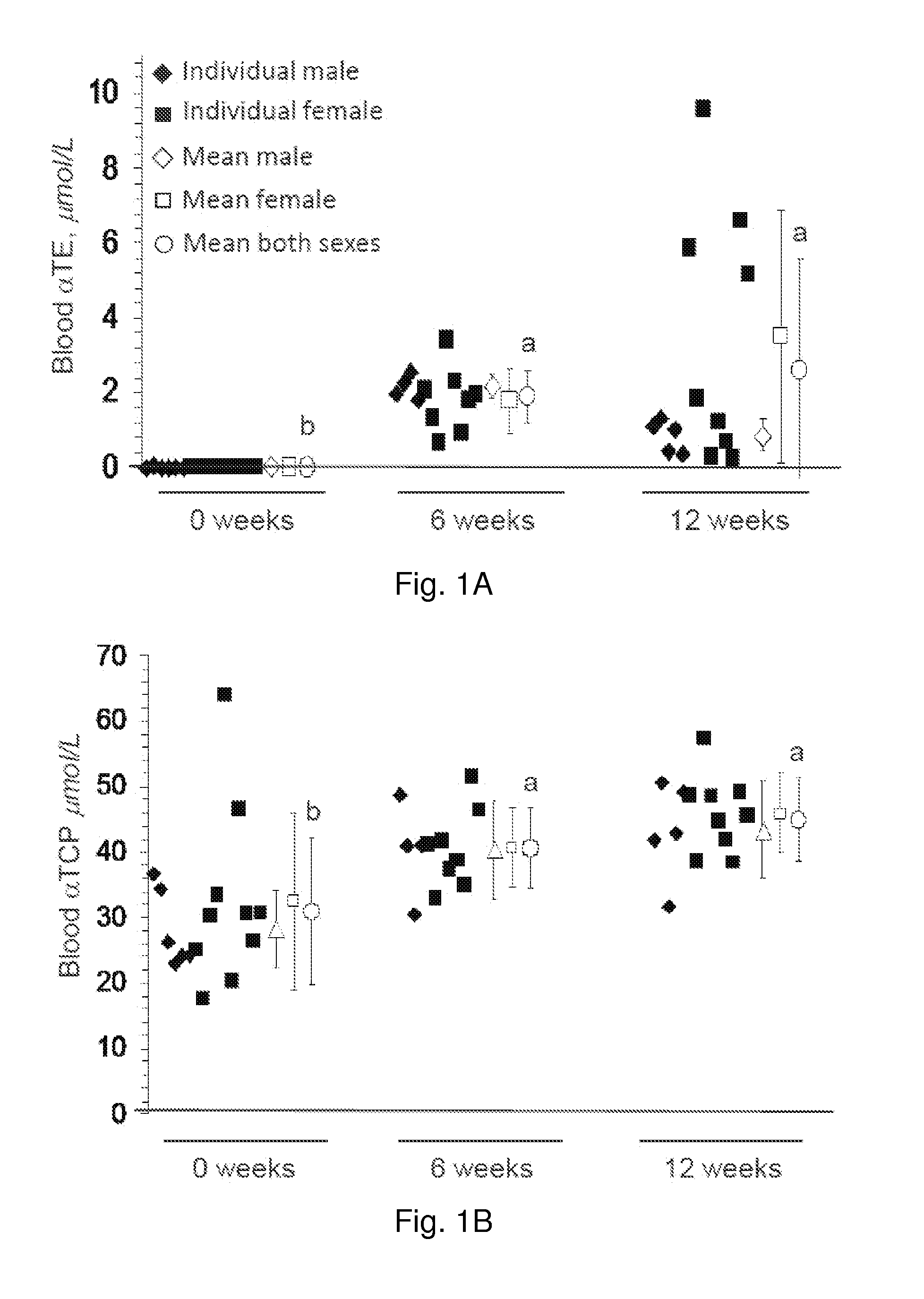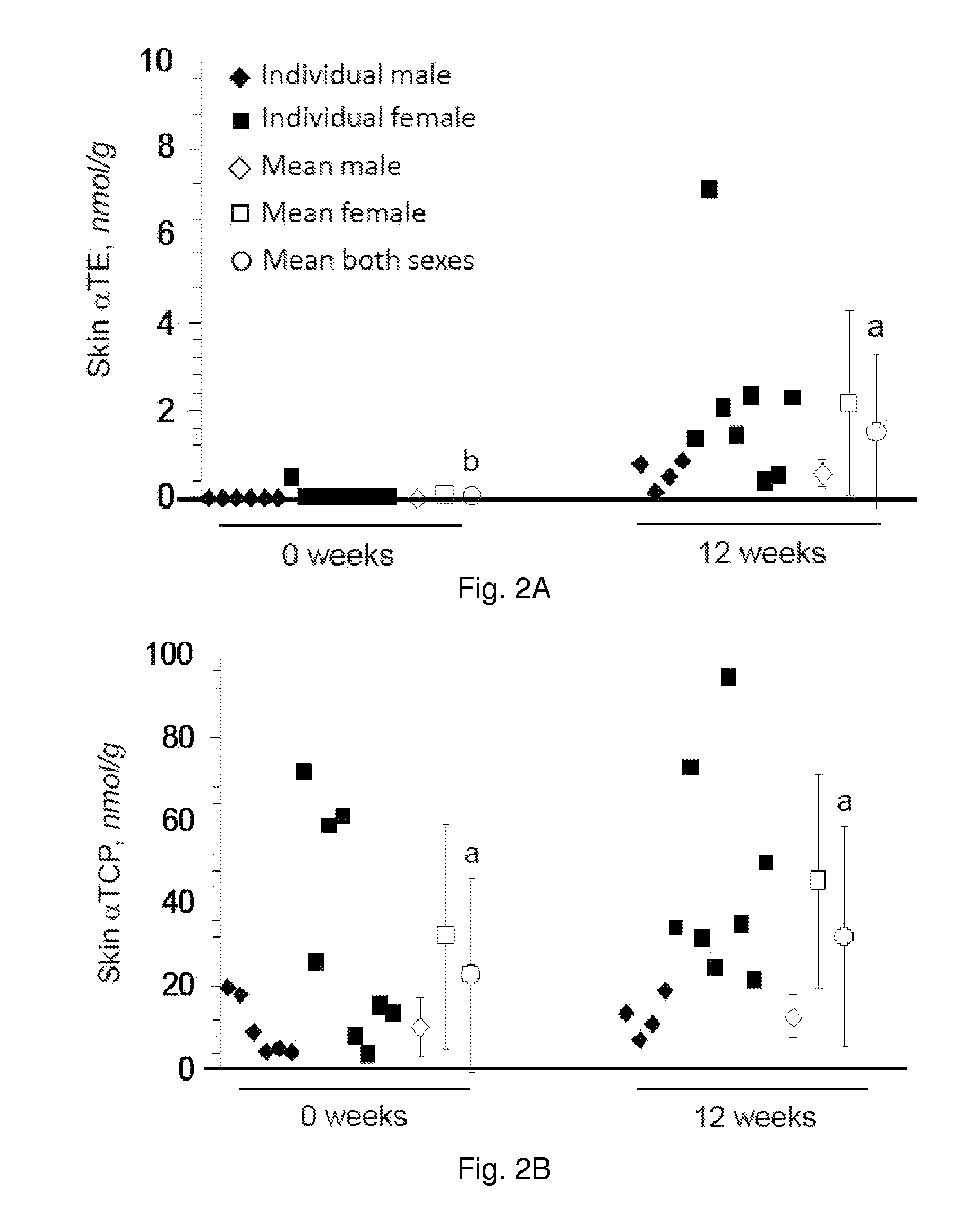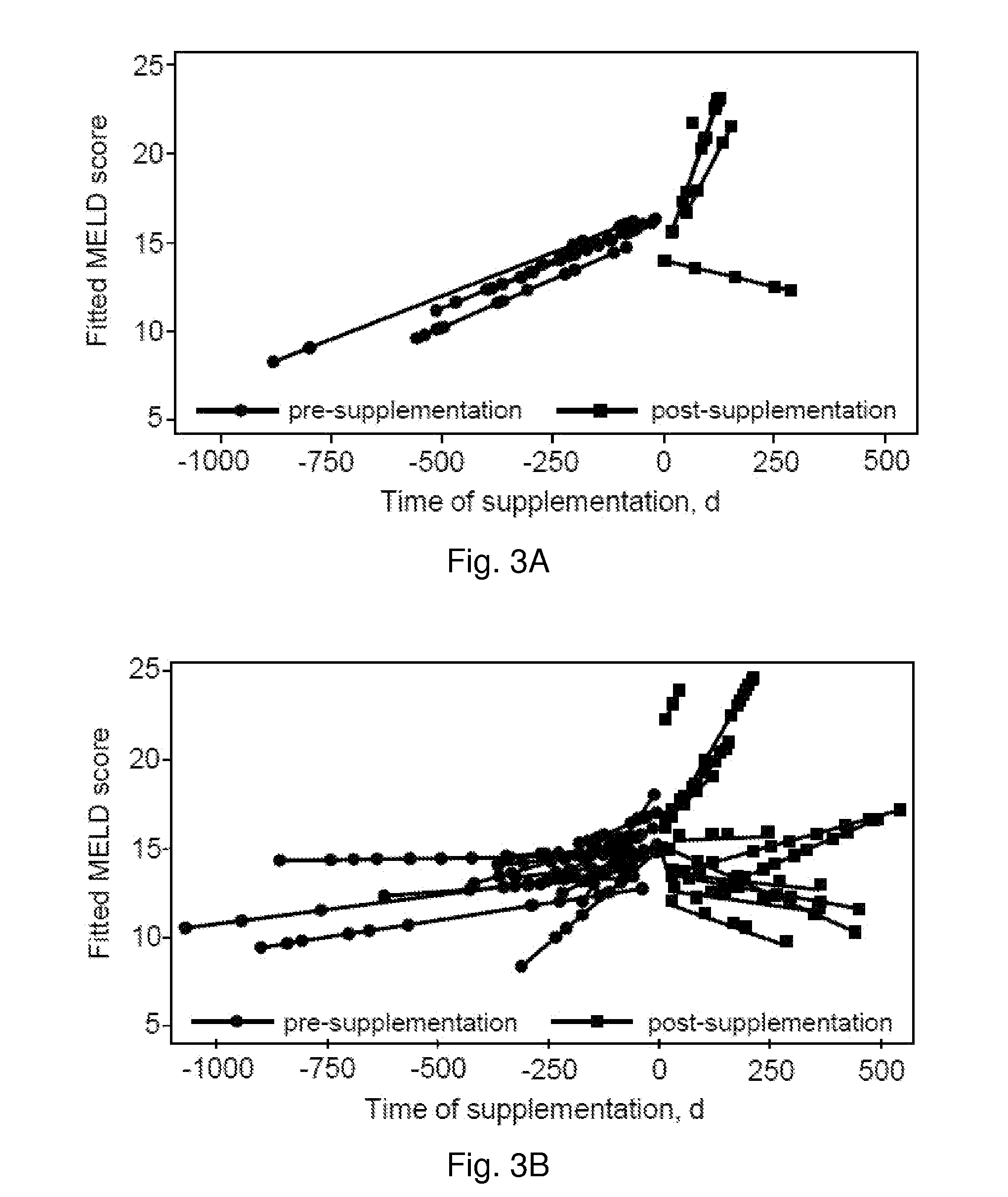Methods for Improving Liver Function
- Summary
- Abstract
- Description
- Claims
- Application Information
AI Technical Summary
Benefits of technology
Problems solved by technology
Method used
Image
Examples
example 1
[0063]Human Participants
[0064]The study protocol was reviewed and approved by the institutional review board of The Ohio State University. All patients provided written informed consent. Due to limitations in obtaining healthy adult human tissue, whole blood and skin biopsy samples were taken from the Healthy Participants Group while vital organ tissue was acquired from the Surgical Patients Group.
[0065]Healthy Participants Group
[0066]Whole blood and skin vitamin E concentration were compared at baseline (pre-supplementation) to samples collected after 12 wk of supplementation with TE. Healthy participants (n=16) received 400 mg of TE daily. Adult volunteers provided two skin biopsy and three blood samples. Skin biopsies were collected from the right (1st biopsy at 0 wk) and left (2nd biopsy at 12 wk) inner thigh. Whole blood was taken at 0, 6 and 12 wk. Healthy participants were chosen for this study because they could be supplemented for a defined time period (...
example 2
[0075]Healthy Participants Group
[0076]Box plots were used to determine outliers; defined as values greater than the 75 percentile plus 1.5 times the inter-quartile range or values less than the 25 percentile minus 1.5 times the inter-quartile range. Twelve outliers were identified and it was determined that lab procedural errors were the cause and thus removed from the analysis. Random-effects linear regression was used to compare the concentrations for vitamin E isoforms across weeks of TE supplementation for both the blood and the skin samples. If the overall P-value was significant at the 0.05 level, the inventors subsequently compared 0 vs. 6 wk, 0 vs. 12 wk, and 6 vs. 12 wk. The P-values were adjusted using the Holm's procedure to conserve the overall type I error at 5%. For skin samples, the inventors compared 0 vs. 12 wk of supplementation with TE. Gender was included as an effect modifier (interaction with weeks of supplementation). If the interaction cov...
example 3
Experimental Results
[0081]In peripheral whole blood of non-supplemented humans, baseline TE levels were negligible. TE supplementation significantly increased the concentration of TE in peripheral blood of both men and women (FIG. 1A and FIGS. 4A, 4B). The mean concentration of αTE in whole blood of TE supplemented participants was more than 1.5 μmol / L following 6 wk and 2.5 μmol / L following 12 wk of supplementation (FIG. 1A). TE supplementation also significantly increased whole blood αTCP levels in study participants. TE supplementation modestly decreased whole blood γTCP9 levels following 6 wk of supplementation. However, after 12 wk, the concentration did not differ from baseline. The data presented demonstrates that daily oral supplementation of TE in a typical human diet is significantly effective in increasing the concentration of tocotrienols in peripheral blood.
[0082]As in whole blood, only trace baseline amounts of αTE, γTE, and δTE were detected in the skin of healthy par...
PUM
| Property | Measurement | Unit |
|---|---|---|
| Fraction | aaaaa | aaaaa |
| Fraction | aaaaa | aaaaa |
| Fraction | aaaaa | aaaaa |
Abstract
Description
Claims
Application Information
 Login to View More
Login to View More - R&D
- Intellectual Property
- Life Sciences
- Materials
- Tech Scout
- Unparalleled Data Quality
- Higher Quality Content
- 60% Fewer Hallucinations
Browse by: Latest US Patents, China's latest patents, Technical Efficacy Thesaurus, Application Domain, Technology Topic, Popular Technical Reports.
© 2025 PatSnap. All rights reserved.Legal|Privacy policy|Modern Slavery Act Transparency Statement|Sitemap|About US| Contact US: help@patsnap.com



